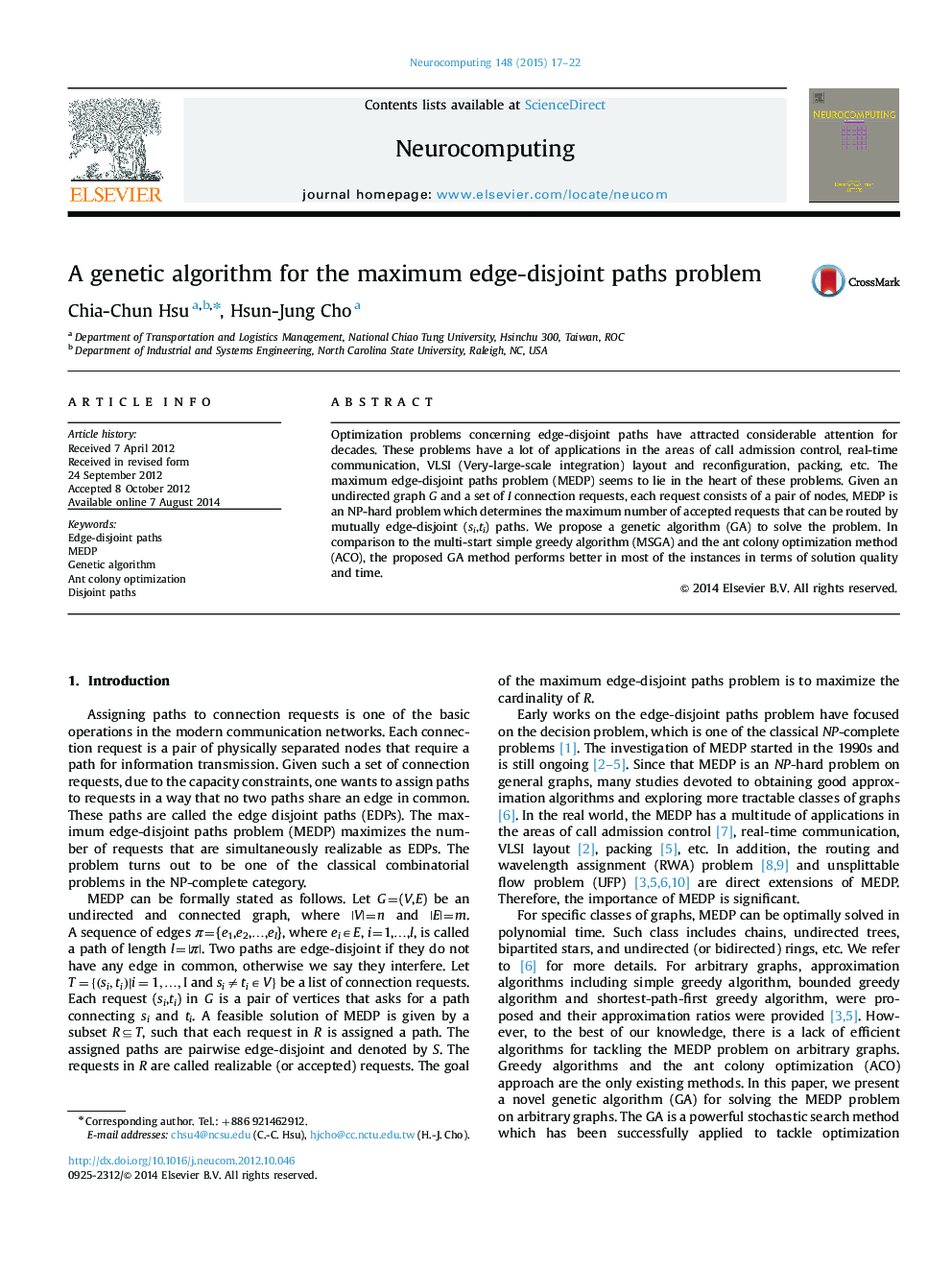| Article ID | Journal | Published Year | Pages | File Type |
|---|---|---|---|---|
| 6866024 | Neurocomputing | 2015 | 6 Pages |
Abstract
Optimization problems concerning edge-disjoint paths have attracted considerable attention for decades. These problems have a lot of applications in the areas of call admission control, real-time communication, VLSI (Very-large-scale integration) layout and reconfiguration, packing, etc. The maximum edge-disjoint paths problem (MEDP) seems to lie in the heart of these problems. Given an undirected graph G and a set of I connection requests, each request consists of a pair of nodes, MEDP is an NP-hard problem which determines the maximum number of accepted requests that can be routed by mutually edge-disjoint (si,ti) paths. We propose a genetic algorithm (GA) to solve the problem. In comparison to the multi-start simple greedy algorithm (MSGA) and the ant colony optimization method (ACO), the proposed GA method performs better in most of the instances in terms of solution quality and time.
Related Topics
Physical Sciences and Engineering
Computer Science
Artificial Intelligence
Authors
Chia-Chun Hsu, Hsun-Jung Cho,
